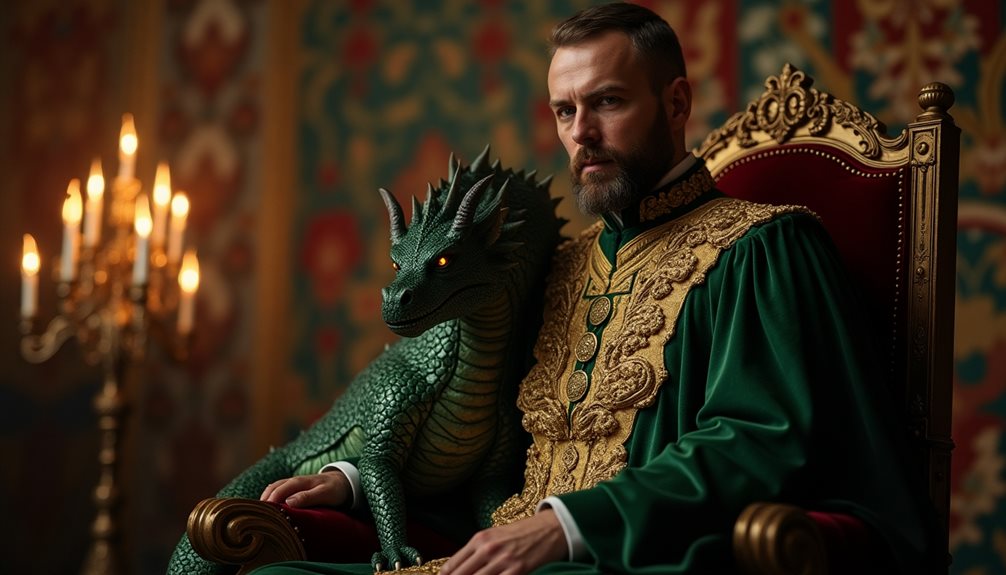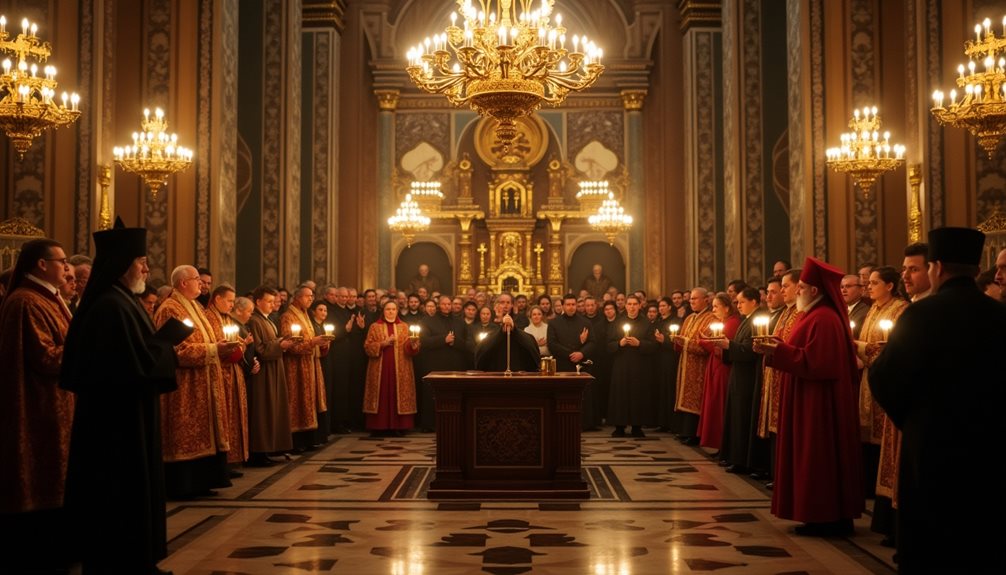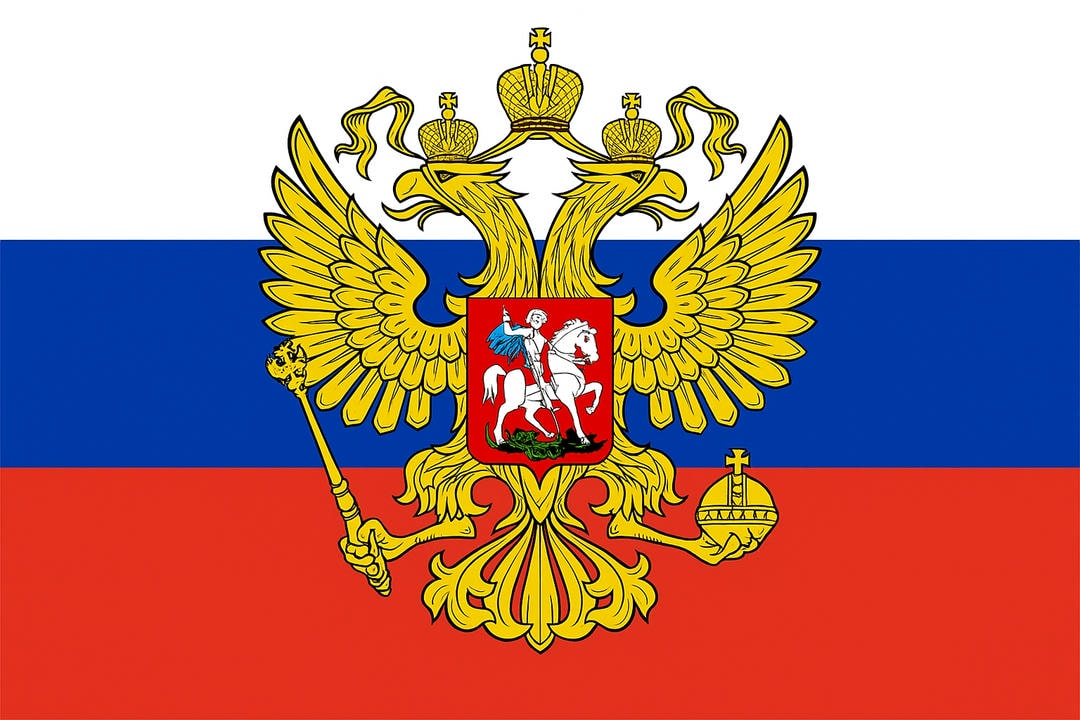Kunstkamera, established by Peter the Great in 1714, stands as Russia’s pioneering public museum. Located in St. Petersburg, it showcases an eclectic collection of natural artifacts, anatomical specimens, and ethnographic items. This institution reflects Peter’s vision of modernization and cultural exchange. With its innovative architecture and diverse exhibits, Kunstkamera remains an essential center for research and curiosity, inviting visitors to uncover the rich fabric of human history and natural diversity. What mysteries might await within its walls?
Introduction
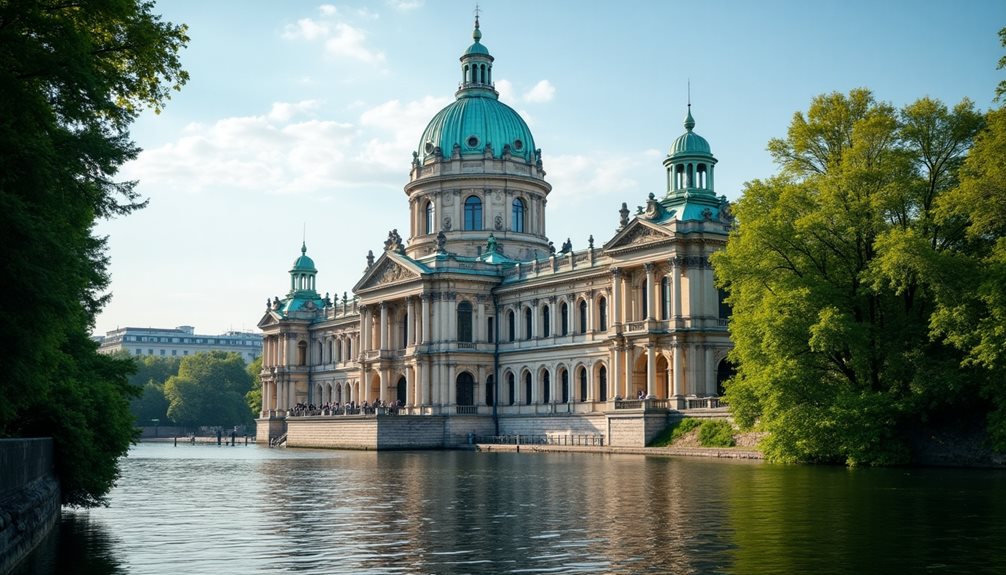
While many nations boast a rich cultural history, Russia stands out as a travel destination steeped in an intricate history and vibrant culture.
Russia’s vastness encompasses a wealth of historical landmarks, cultural richness, and natural beauty. Iconic sites like the Kremlin and Red Square highlight centuries of significant events. Cultural festivals, such as Maslenitsa, offer immersive experiences into local traditions. The nation’s culinary offerings, including borscht and blini, provide visitors with unique flavors. Beyond the cities, Russia’s landscapes, such as the Siberian taiga and Lake Baikal, present awe-inspiring vistas
Amidst the history of Russia lies the Kunstkamera, a pioneering institution that exemplifies the nation’s dedication to knowledge and exploration. Peter the Great’s reign in the early 18th century marked a period of modernization, influenced by Western models, with the goal of integrating Russia into the European sphere. This era saw scientific advancements, cultural exchange, and urban development, symbolized by the founding of St. Petersburg. Peter’s vision included embracing new technologies and ideas. His travels in Europe during the Enlightenment exposed him to scientific revolutions, inspiring him to establish the Kunstkamera.
Founding of the Kunstkamera
Established in 1714 and opened to the public in 1727, the Kunstkamera was Russia’s first museum, embodying Peter the Great’s commitment to scientific exploration and cultural understanding. The museum’s establishment in St. Petersburg reflected Russia’s intellectual ambitions and housed a diverse collection of artifacts.
Inside the Kunstkamera’s Collections
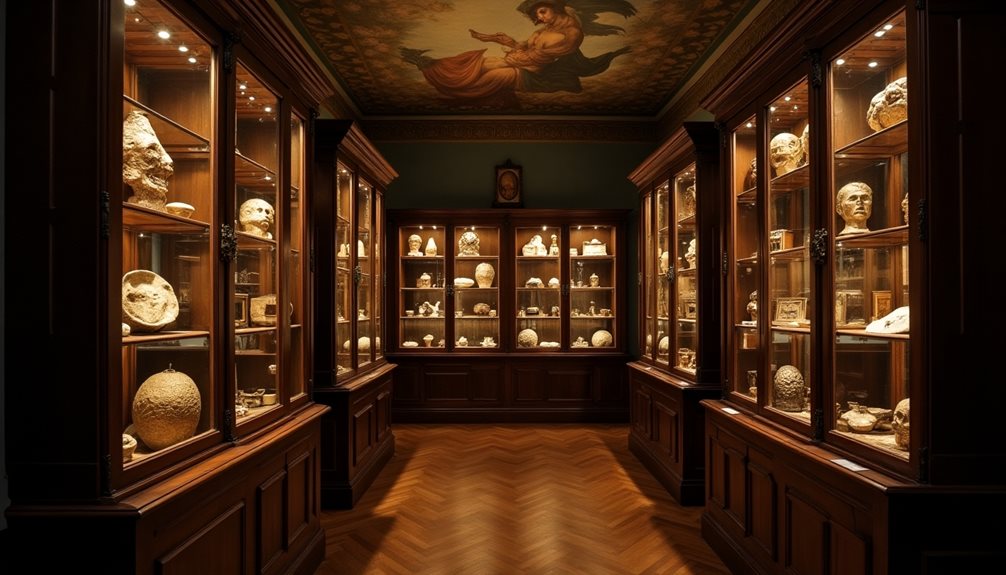
The Kunstkamera’s collections provided insight into the Earth’s biodiversity through natural artifacts, while meticulously preserved anatomical specimens revealed the complexities of the human body, serving to educate and demystify. Ethnographic items showcased cultural heritage, providing a glimpse into diverse societies and traditions, and scientific instruments underscored the technological advancements of the era, enabling exploration and innovation. Each item contributed to a broader global understanding, aligning with Peter’s mission to cultivate curiosity and intellectual freedom in Russia.
Visitors to the Kunstkamera encounter a range of collections reflecting Peter the Great’s interests. The architecture invites exploration and houses artifacts highlighting the Russian Empire’s cultural diversity. Exhibits chronicle the evolution of knowledge and draw global visitors keen to experience human achievement within this historic institution.
Anatomical Collections of Frederik Ruysch
Acquired from Dutch anatomist Frederik Ruysch, the Kunstkamera’s anatomical collections are significant for their meticulous preservation and scientific value. The collections feature human and animal specimens, demonstrating Ruysch’s contributions to medical practices. His preservation techniques allowed for detailed examination, providing insights into anatomy. The precise dissections and displays were educational and artful. The ethical implications of collection practices during Ruysch’s era invite reflection, as these specimens reflect science, art, and ethical inquiry.
Russia’s Cultural Diversity
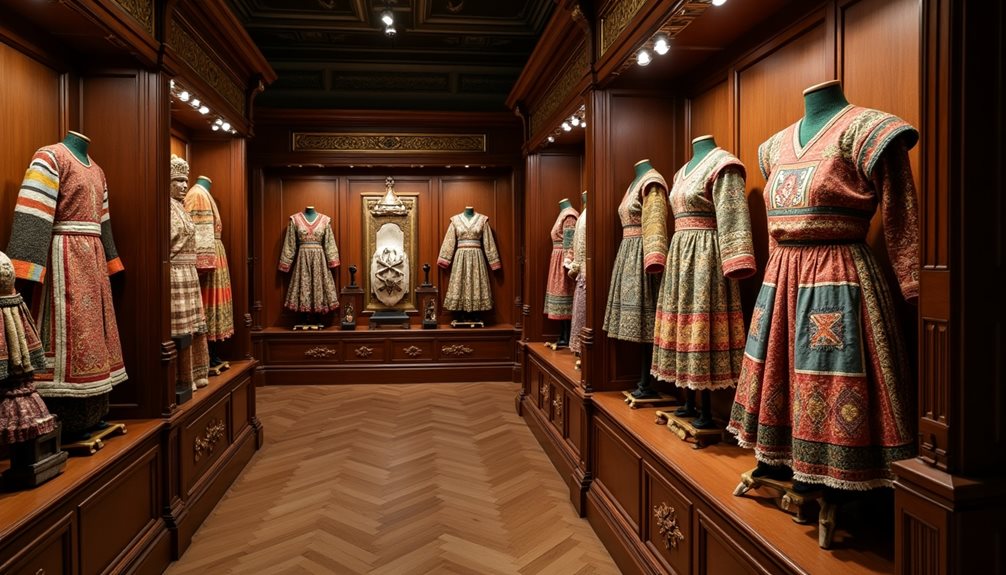 The Kunstkamera provides a glimpse into the diverse cultures of the Russian Empire, with exhibits featuring cultural artifacts of historical significance. Ornate traditional costumes from Siberian tribes illustrate the region’s ethnic diversity. Jewelry from the Caucasus highlights regional customs and craftsmanship, while tools and pottery from Central Asia reflect their way of life. Each exhibit showcases Russia’s ethnic heritage.
The Kunstkamera provides a glimpse into the diverse cultures of the Russian Empire, with exhibits featuring cultural artifacts of historical significance. Ornate traditional costumes from Siberian tribes illustrate the region’s ethnic diversity. Jewelry from the Caucasus highlights regional customs and craftsmanship, while tools and pottery from Central Asia reflect their way of life. Each exhibit showcases Russia’s ethnic heritage.
Impact and Legacy: More Than Just a Museum
Cultural resonance reverberates through the legacy of Kunstkamera, transcending its initial role as a mere repository of artifacts.
It stands as a beacon of cultural preservation, safeguarding diverse traditions within the Russian Empire. Its scientific contributions are profound, fostering early enlightenment thought and inquiry.
The museum’s educational impact is undeniable, serving as an essential resource for scholars and the curious alike.
Artistic influence emerges from its diverse collections, inspiring creativity and innovation.
Its historical significance is woven into the fabric of Russia’s cultural identity, embodying a commitment to knowledge and understanding that continues to inspire and inform.
Instrumental in advancing Russian scientific and educational frontiers, Kunstkamera played a pivotal role in the early 18th century.
As Russia’s first museum, it fostered scientific advancements through its extensive collections, serving as a hub for intellectual inquiry. It prompted educational reforms by supporting research and scholarship, nurturing a generation of Russian scientists and educators.
The museum’s innovations in cataloging and display facilitated cultural exchanges, connecting Russia with European intellectual movements.
Kunstkamera’s historical significance lies in its role as a catalyst for modern scientific thought, transforming Russia into a burgeoning center of knowledge and enlightenment during a transformative era.
Influence on other Museums
Building on its foundational role in Russian science and education, Kunstkamera’s influence extended beyond its own walls, inspiring the creation of numerous museums and cultural institutions across Russia.
As the pioneer of museum evolution, it set a precedent for the cultural impact museums could have in society. Its existence fostered educational initiatives and drove scientific advancements, encouraging an intellectual curiosity that spurred the establishment of new institutions.
These institutions furthered preservation efforts, ensuring that cultural and scientific knowledge could be maintained and disseminated.
Kunstkamera’s legacy lies in its ability to catalyze a thriving landscape of museums and cultural hubs throughout Russia.
Part of Russia’s Academy of Sciences
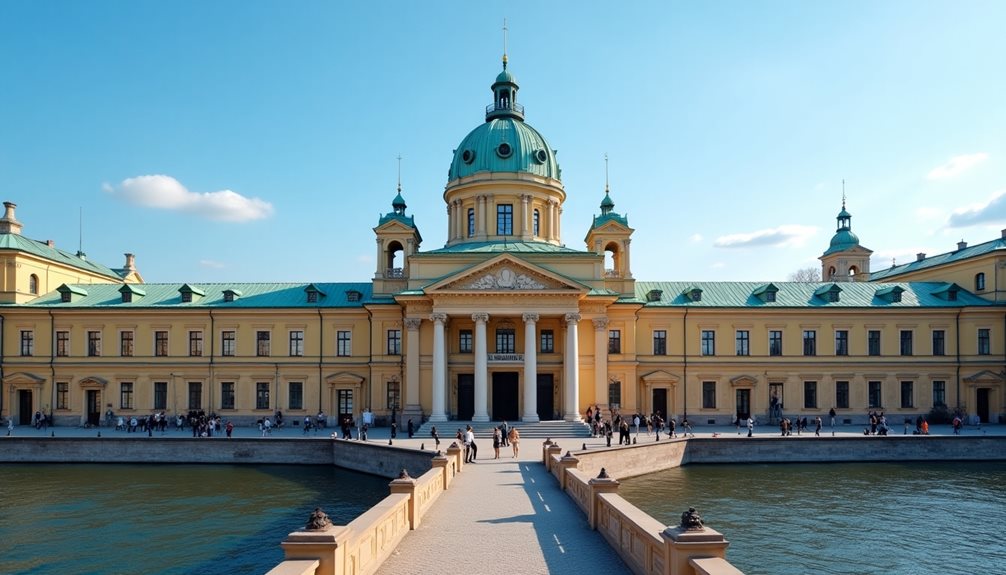
As an enduring symbol of Russia’s commitment to scientific inquiry and cultural preservation, the Kunstkamera remains an essential research center and museum today.
As part of the Russian Academy of Sciences, it holds immense research significance, continually contributing to scientific knowledge and cultural heritage.
Its educational programs engage diverse audiences, fostering curiosity, and the museum’s modern exhibitions present a dynamic blend of historical artifacts and contemporary insights, reflecting ongoing scientific contributions to society.
Visiting the Kunstkamera
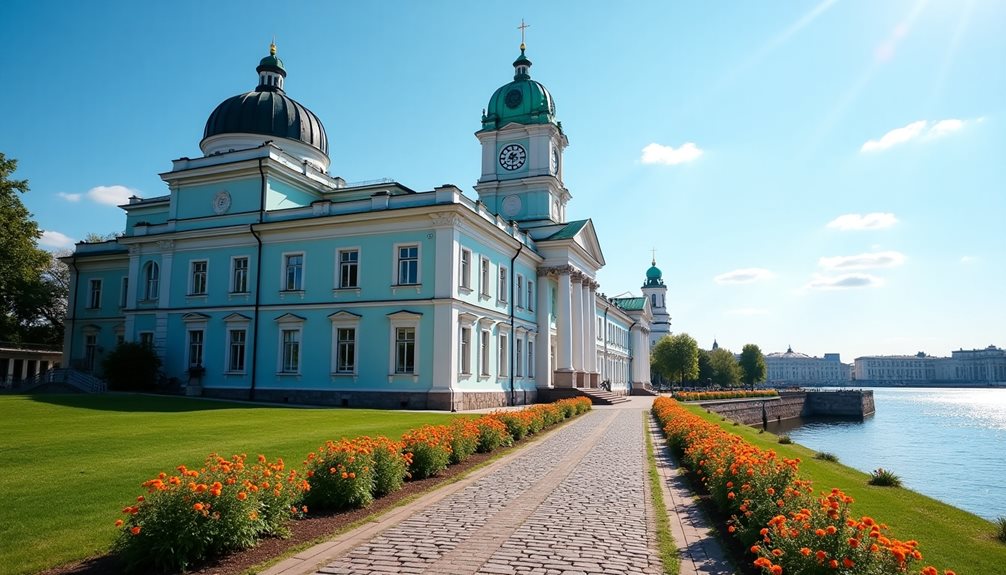 How does one begin planning a visit to the illustrious Kunstkamera in St. Petersburg?
How does one begin planning a visit to the illustrious Kunstkamera in St. Petersburg?
First, delving into the museum architecture reveals an iconic establishment, embodying Russia’s cultural significance as the first museum. Its collection of historical artifacts offers profound insights into various cultures and epochs, enriching visitor experiences.
The museum’s educational programs are meticulously crafted, fostering learning and exploration for all ages. Visitors will find themselves immersed in the narratives presented, each artifact a demonstration of humanity’s diverse past.
The Kunstkamera promises an enlightening journey, making it an essential destination for those seeking both knowledge and cultural enlightenment.
To make the most of a visit, consider the following:
- Museum Accessibility: Ensure easy navigation throughout the museum.
- Guided Tours: Opt for guided tours to gain deeper insights into the historical significance of the exhibits.
- Local Exploration: Enhance the experience by exploring local cuisine at nearby restaurants, enjoying authentic flavors.
- Travel Tips: Familiarize yourself with public transportation and secure accommodations in advance.
- Cultural Etiquette: Respect local customs and dress codes to enrich the visit.
The Kunstkamera is located on the University Embankment in St. Petersburg. Visitor information is readily available to ensure a smooth experience. The museum’s opening hours provide ample time for exploration. Ticket prices may vary, with discounts available for students and seniors. The central location allows for easy access.
Visitors can also enjoy unique exhibitions that explore Russia’s cultural heritage. These may include showcases of rare artifacts from different regions, cultural events, and educational programs. Interactive displays often bring history to life, offering a hands-on experience.
In conclusion, a visit to the Kunstkamera offers an enlightening journey through history and culture. By considering these tips, visitors can ensure a memorable and enriching experience at this iconic museum.

